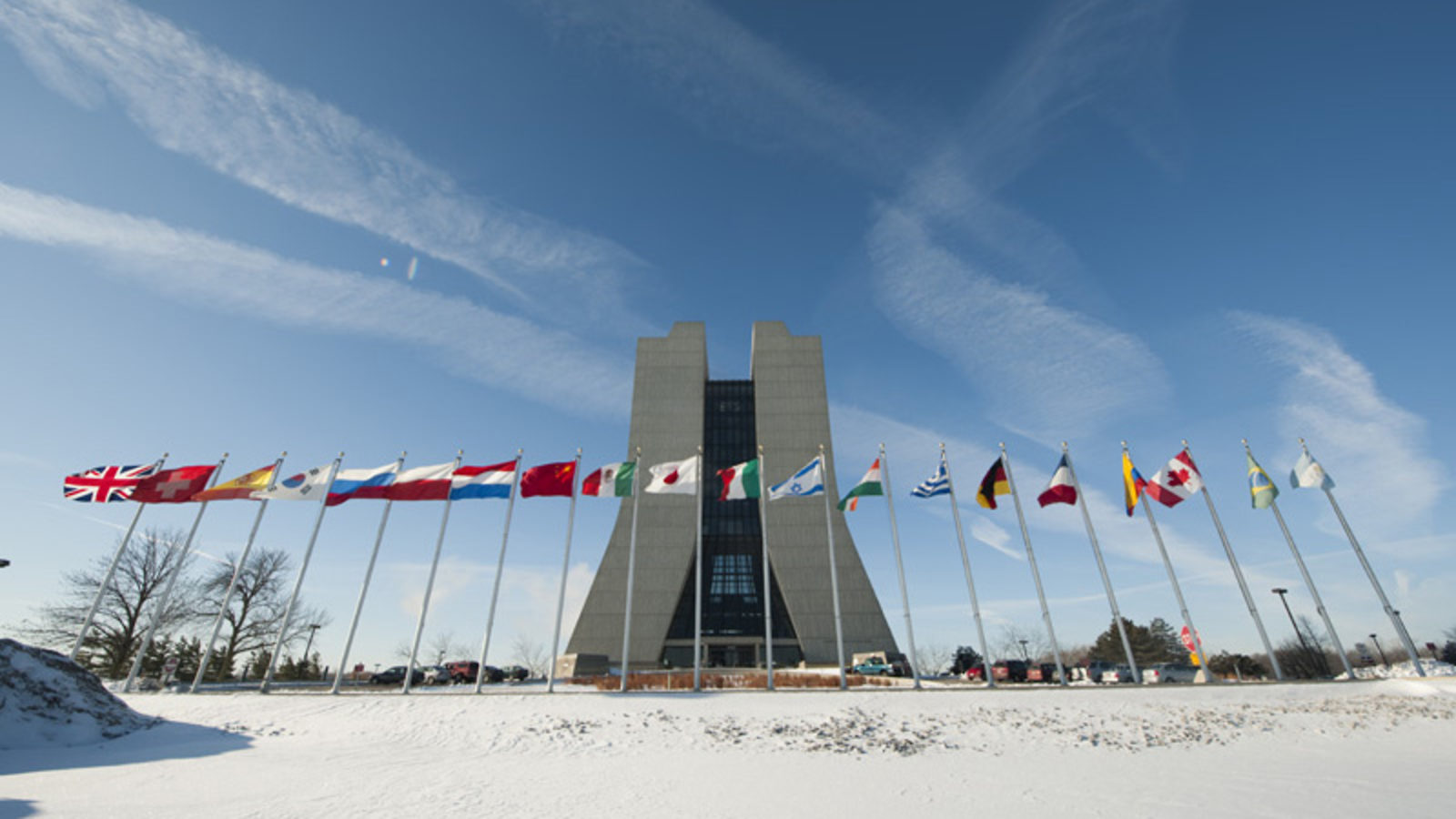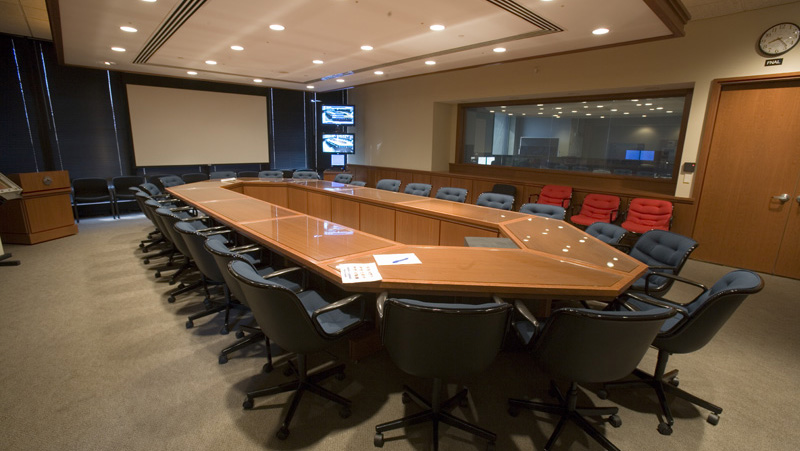This summer, The New York Times’ Opinionator blog posted a photo of an ordinary, fluorescent-lit hallway, indistinct apart from one feature: a placard proclaiming “Dungeon” in tall capital letters. As part of the blog’s “summer game” series, readers were asked to guess the context of the photo. Many correctly guessed “conference room,” but none pinpointed the precise location: Fermi National Accelerator Laboratory, a Department of Energy-funded high-energy physics lab in the suburbs of Chicago.
As it turns out, Fermilab plays host to a trove of whimsical, bizarrely named conference rooms.
While the Dungeon is found in the lab’s Cross Gallery, a building dedicated to accelerator operations, most of the conference rooms are housed in the lab’s main office building, Wilson Hall. John Kent, the building manager for Wilson Hall, said that rooms are often named by those who would most often use them. The building, modeled after a Gothic cathedral in Beauvais, France, has one of the world’s largest atriums, and, at 16 stories, it towers over the rest of the lab. Much of the work conducted there translates into high-tech particle accelerator experiments and contributions to scientific discoveries such as the Higgs field.
Let’s explore, from the ground up.
Floor 1
Names of meeting rooms start out simple and ordinary on the first floor: One North, One East, One West and the Small Dining Room.
Floor 2
The second floor is where things start to get weird. For starters, both the Black Hole and the Snake Pit flank the north end of the building. The Comitium is just a short jog away—its name stemming from the Latin word for “assembly.” Fermilab’s first director, and Wilson Hall’s namesake, Robert Wilson, chose that one personally as a hat tip to the so-named outdoor public meeting spaces of ancient Rome—Wilson studied art in Italy prior to his directorship days.
Wilson also named Curia II, another second-floor conference room (preceded by the Curia in the nearby Fermilab Village), this time after a Latin word thought to derive from the word “coviria,” meaning a “gathering of men.” No word on how Fermilab’s female employees feel about this.
As one climbs higher in Wilson Hall (there’s a reason it’s also called the high-rise), the conference rooms get fewer and farther between.
Floor 3
The third floor only has two of them, and while they sometimes go by “Theory Conference Rooms 3-Northeast and 3-Northwest,” the names the Conjectiorium and Theory lend more individuality.
Floor 4
The fourth floor, though equally scant in its conference room offerings, has a bit more flair. The Req Room’s name conjures up visions of Hogwarts’ Room of Requirement, while the Abacus was christened in an employee naming-contest.
Floor 5
The ConFESSional, on the fifth floor, plays with the acronym for Fermilab’s Facilities Engineering Services Section, or FESS, and, together with the Baptismal and Tabernacle, creates some kind of holy trinity of religion-themed conference room names.
Floors 6 & 7
Up a floor, the Dark Side channels George Lucas. Then, on seven, there’s the Racetrack (perhaps paying homage to the particles that some accelerators hurtle around a circular tunnel at high speeds). Other sports-themed conference rooms include the Bullpen, also on the seventh floor; the 19th Hole, on the 14th floor; and elsewhere on the Fermilab grounds, the Outfield.
Floor 8
Wilson Hall’s eighth floor’s claim to fame is the Hornet’s Nest, marked by an actual hornet’s nest on display. A plaque by the nest jokingly says “a piece of the DZero Muon Chamber.” The detector from the DZero experiment was one of two that were positioned along the now shut-down Tevatron accelerator ring; muon chambers made up the outermost layer of DZero’s detector. Colorful signs posted on either side of the conference room state the words or phrases for “hornet’s nest” in many languages: “zes muv,” “avispero,” “nido del calabrone,” “Hornissennest.”
In its day, the buildings housing the DZero experiment had a few quirky room titles of their own, among them: Hurricane Deck, Doghouse, Salles Des Heros (“room of heroes” in French) and The Far Side. The latter might be a nod to the popular cartoonist Gary Larson, who often draws tongue-in-cheek portrayals of scientists in his comics. Too bad for DZero, though; Larson already has a species of lice named after him (Strigiphilus garylarsoni) and is unlikely to be wooed by a conference room namesake.
Floor 9
It seems most likely that Wilson Hall ninth floor’s Libra is yet another reference to a Latin term rather than a zeal for the constellation or astrological sign. But you never know.
Floor 10
Users may watch the sunrise from the Sunrise conference room, located on the northeast corner of the 11th floor or enjoy a view of the setting sun from the southwest corner of the floor, in the Sunset conference room.
Floor 12
The 12th floor houses the Nu’s Room, which has nothing to do with the HBO drama series and everything to do with the Greek letter v. In particle physics, v, or nu, represents subatomic particles called neutrinos.
Floor 15
The highest conference room in Wilson Hall is the Aquarium. One can only imagine how often mix-ups occur with the Quarium, a room located on floor 8.
About 2500 researchers from 34 countries collaborate on Fermilab experiments, some of them full-time employees and more of them visiting experimenters from other institutions. If one thing is clear from this list, it’s that physicists from all different backgrounds can be brought together by puns, inside jokes, dead languages, offbeat pop culture references and passed-down traditions.








